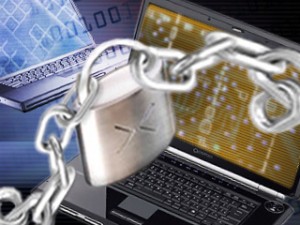 Hello everyone,
Hello everyone,
In a previous post, I showed you that just as “insects” can enter into your beautiful house through a torn and punctured door screen, Internet “bugs” can enter into your beautiful computer through holes in the Windows Operating System (Solution #1 = Microsoft Windows Update).
Then, in another post, I told you that since Internet “bugs” have been locked out of your computer by Windows Update, these “bugs” now need your cooperation to get into your system and they will do everything possible to trick you into letting them in! How will they get in now? You will open the door, you will unwittingly let them in!! You will accidentally allow them to install! They will fool you into letting them in!! (Solution #2 = Enable Windows Firewall & #3 = Correct Email Procedures).
Today in this third post, I would like to alert you to another way that you can be tricked into allowing “bugs” to enter and infect your system, and also one way in which you can keep your sensitive, personal data totally invisible from online criminals. If you are aware of these “tricks”, you will not be fooled by them and will therefore be able to keep your computer safe and secure.
4) Browsing The Internet: You can infect your computer just by visiting “bad” (malicious) web pages. These pages run Flash (Flash adds animation and interactivity to a web page. It’s content can be crafted to look like many different file types, such as Microsoft Word or Excel documents, image files or ZIP files). Web pages will also run JavaScript (JavaScript enhances the user interface and web site appearance. JavaScript provides the potential for malicious authors to deliver scripts to run on a client computer via a web page). Not all Flash & JavaScript are bad but they can be used to run any code they wish on the user’s system. What to do?
A) Run the latest version of: The Firefox browser (install the NoScript or Flashblock extension).
B) Download and install the latest versions of: Adobe Flash Player, Sun Microsystems Java Runtime Environment Standard Edition, and Adobe ShockWave Player. I get 95% of my software from FileHippo (http://filehippo.com). FileHippo is simply my favorite software site!
C) Run your programs in Sandboxie (http://www.sandboxie.com). Sandboxie runs your programs in an isolated space which prevents them from making permanent changes to other programs and data in your computer. “Bad” software is “trapped” in the sandbox. How cool is that!
5) Online Financial Transactions: Legitimate online banking sites and shopping sites are always secure which of course allows you to enter sensitive personal information without risk. But many time these sites aren’t legitimate at all, but are phony and insecure – trying to fool you into giving them your personal data. How to know? What to do?
A) Look in your browser address bar: Make sure you see https:// (not http://) in front of the site address. HTTPS is a combination of certain protocols which provide encryption and secure identification of the server your connected to. Look for the “s” after http!!
B) Double click on the padlock icon: Look down at the status bar (lower right hand corner of the screen) and find the padlock icon. Double-click on the padlock icon and make sure that the certificate is in fact issued to the web address or company name that you think it to be.
If you see no https:// and no padlock icon you have accessed an insecure site and you should not enter any sensitive, personal information!
Professor Randy says: You’re no fool!! Be aware of the online tricks and don’t allow the “bad guys” to infect your system or obtain any of your personal information!



2:13 am on December 19th, 2009 1
Dear Author randythetechprofessor.com !
It can be discussed infinitely..